Currant - a well-known long-term shrub belonging to the gooseberry family. The size of the bushes ranges in the range of 1-2 m and depend on the variety of culture. With proper care, this plant is able to frig over 20 years. Upon reaching two to three years of age, you can harvest. Among the most common types of currant, found in our gardens, you can allocate red and black. The quality of the harvest directly depends on the care of the bush.
Purpose pruning
To determine the status of the plant, you must pay attention to the annual increase. So called replacement shoots that appear at the base of the shrub. Their most intense growth is traced during the first year. During this period, the branch reaches 1 m in length. They grow in the vertical direction, and the next year after the appearance begin to branch. The growth zone of these shoots, which are also called zero, is in their lower part. Of the most strong increments located in this area of \u200b\u200bthe kidneys appear. The middle part of the branch is the placement of growth kidneys, and the upper - floral.
Before dealing with how to properly cut the currant in the spring, you should read this procedure. It is one of the main stages of clearance of currant. The need for it is due to several reasons:
- First of all, it is possible to ensure the required conditions for obtaining a crop.
- Pruning helps to constantly update the shrub. Fruits appear only on the shoots of a certain age, then this process slows down.
- Pruning shoots that no longer give fruits makes it possible to create conditions for the formation of new branches.
- Also pruning is performed under health purposes. Shrub shoots that have not passed this procedure will be weakened. Such a plant is a favorable medium for pests, which will lead to the death of culture. If you lose this stage, then by the mid-summer, the shrub will be too thick. The rays of the sun will not be able to penetrate it, and the lack of light will negatively affect the yield.
- Also, the trimming targets include the formation of a bush and the prevention of excessive density.
Fundamental rules
- Crop the shrub when landing, and then two times throughout the year - in the spring and autumn period.
- The shoots of the planted bush should be shortened by 20 cm. Above the level of soil leaves 3-4 kidneys. The weaker branches, the more they are shortened.
- The following year, last year's gains will give a harvest and new shoots will appear on them. Crimping currant in the spring should be performed until the kidneys and the beginning of the juice movement. And these processes occur already at a temperature of + 5 ° C, so it is necessary to start working as soon as snow cover comes.
- It is important to determine the location of the cut properly. From his kidneys should be separated a distance of 5 mm. The angle is also important. It should be equal to 45 °. We should not ignore these rules, as a result of their non-compliance with buds wither. Among the negative consequences that can result as being too close and too high location of the cut. In the latter case, it will cause the drying part of the shoot, which is located above the kidney.
- It is necessary to take into account the direction of growth of the branches. To the bush to get enough light and well ventilated, it shoots should grow outwards.
Spring removed the young branches and zero. On a bush leave 4-5 hardest shoots. Also, cut the tops and new growth, leaving 2-3 buds. As a result of these actions on the old shoots will appear new branches. If the bush is too thick, to bring it back to normal will take several years. In primary six-year pruning shoots are removed. The next year, keep a few increments of all ages (2-3 branches would be enough), and the rest are removed. When thinning bush sprouts are cut off at the base, i.e., below ground level.
With the cutter, you can expand the plot growing currants. To do this, in the course of this procedure leaves an additional 2-3 year-old runaway. Branch bends to the ground and secured in this position. common space increments with the ground need to sprinkle the ground and later watered periodically. After one year, full-formed plants.
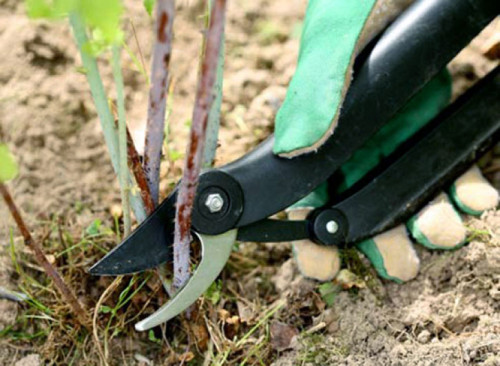
How to cut the currants in the spring: a running bush
- Originally performed thinning. It is necessary to remove weak, broken, unproductive fodder and growing into the inner side shoots.
- Including pruning and are subject to annual branches, if they do not give fruit. Enough to leave 3 strong shoots.
- If the formation of new growths occur slowly, in different places shrubs need to remove an additional 2 or 3 old strong branches.
- On the left near the base of the shoots must be completely cut or shorten gains.
- If the tops of old branches are starting to dry up, the damaged part is removed.
Features pruning depending on the type of culture
This procedure has its own nuances, which are determined by the variety of currant. Crimping the black currant in the spring involves the removal of the branches of the five-year-old age. The crop in this culture is formed on one-two-year shoots. Older increments do not bring a large amount of fruits, and also impede the development of young branches. Therefore, they are getting rid of them. You can distinguish old shoots in appearance. They have a large thickness relatively with young shoots, as well as the dark color of the bark.
If there is a neaseed bush, then the procedure is performed within 2-3 years:
- In the first year you need to get rid of patients of dried branches, as well as half of old growth.
- As a result, new shoots from which are chosen 5-6 most viable, and extra deletes are selected.
- On the third year, 7-8 young branches leave, the rest are cut. Also come with old increments.
The top of the new shoots on which 5-6 kidneys is located are removed. After that, side gains will be formed. This will help ensure good branching and increase in yield. With further care, it is necessary to leave 3-4 most viable escapes from new gains. They also cut the upper part.
Red currant shoots are able to give a harvest for 7-8 years. The kidneys appear on small fruit branches, the length of which is 2-3 cm. Fruits are located on shoots in the form of tiers. For this reason, the cropping of red currant in the spring does not provide for the removal of the top, since the future harvest will be removed as a result. Every year it is necessary to leave 3 or 4 new escapes. The elimination is subject to old branches whose age exceeds 8-10 years and weak gains. If the bush is too thickened, you need to remove some healthy young shoots.
How is the trimming of rejuvenation of a bush?
Shrubs whose age reached 15 years, need to be rejuvenated. To do this, you need to do the following work:
- With the onset of spring, the third part of the bush such currant is cut to the base.
- When new branches will grow from them, you need to choose the strongest, and the remaining remove.
- A year later, a third of the oldest shoots are cut out, leaving 3 young branches.
- With the third trimming, the remaining old growths are removed.
- It should be borne in mind that the bushes that have reached the twenty-year age are no longer subject to rejuvenation. They need to be completely removed.
Method of processing cut
The cutting area is treated with garden water. It can be purchased in specialized points of sale or prepare yourself. You can do this with several recipes. To prepare the composition of the first way you will need:
- shedsome furious swine fat - 200 g;
- turpentine - 400 g;
- a similar amount of wax rosin.
Work begins with the melting of the wax to be placed on a weak fire. Then the remaining components are added. In the cooking process, the mixture should be stirred to avoid burning. After a while, the mass will become homogeneous, after which it should be poured into a tin tank. If by the time when it becomes necessary to use the booth, it will freeze, then the composition should be heat and add a slight amount of fat.
For the second recipe you will need:
- rosin - 400 g;
- alcohol - 50 ml;
- linen oil - 1 tbsp. l.
The cooking process Vary looks like this:
- Rosin put on a small fire and constantly stirred it to the state of complete melting.
- Next, the mass is removed and give a little cool.
- Then add alcohol and oil, continuing to stir.
- The prepared mixture is poured into the jar and is tightly closed with a lid so that the air does not penetrate inside.
- Opening the capacity follows only when using the Vara. The composition is applied to the cutting area by means of a tassel. When contacting air, this mixture quickly hardens and well closes the damaged area.
To prepare the Wara according to the third recipe, it is necessary to prepare 400 g of grained fat, vegetable oil and rosin. All components are stacked in a container, which is placed on a weak fire. When the composition acquires a homogeneous structure, it needs to be cooled, pour into the container and close tightly.
In addition to pruning, other requirements for currant care should also be performed to obtain a quality crop. These include: soil loosening, removal of weed plants near the bush, making fertilizers and watering. Prevent the appearance of pests on culture, by landing around it dill and garlic around it. For shoots not damaged under the weight of berries, support should be provided for them. For this purpose, pegs are suitable to be driven into the ground. Rakes are installed between them.
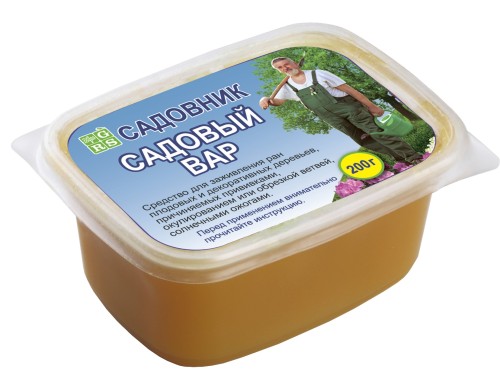
Conclusion
Currant trim helps regularly update the shrub, cut forward it, and also prevents pest appearance. Along with other plant care events, this procedure makes it possible to improve the quality of the harvest and increase its number.
How to cut currants in the spring. Video:

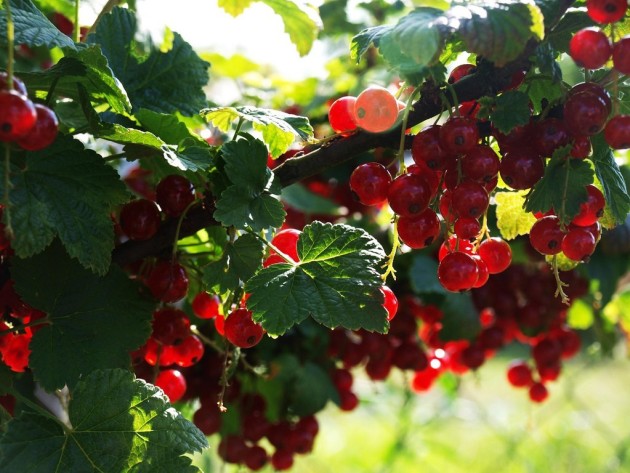
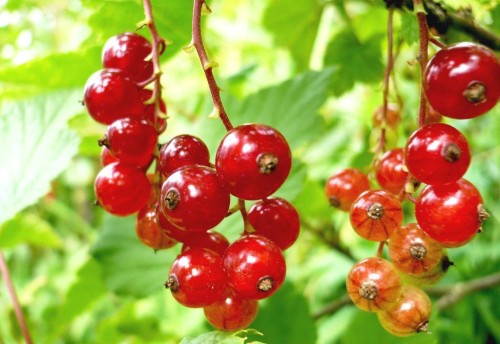

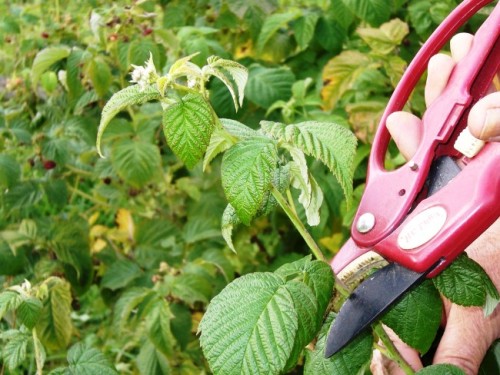
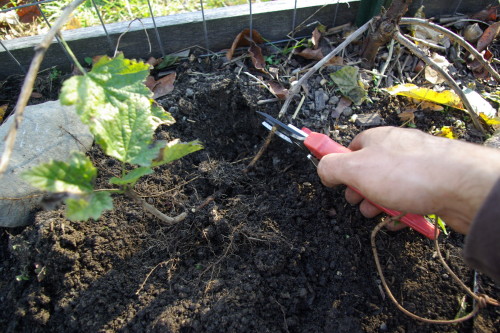












 Start a discussion ...
Start a discussion ...